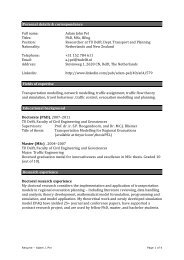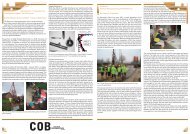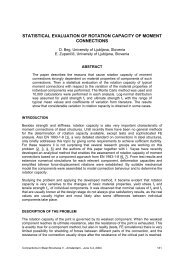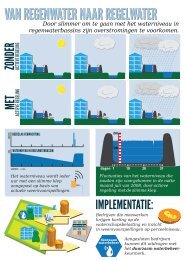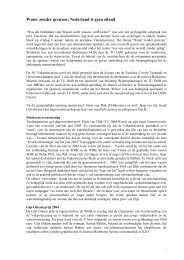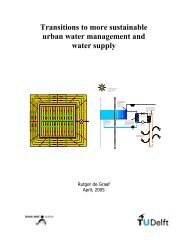Structural Design of Pavements PART VI Structural ... - TU Delft
Structural Design of Pavements PART VI Structural ... - TU Delft
Structural Design of Pavements PART VI Structural ... - TU Delft
Create successful ePaper yourself
Turn your PDF publications into a flip-book with our unique Google optimized e-Paper software.
27<br />
The way in which the load is distributed depends on the thickness and the stiffness <strong>of</strong> the<br />
layer. In figure 14, the top layer is the stiffest followed by the base and the subgrade. It is<br />
obvious that only that part <strong>of</strong> the pavement that is subjected to stresses, will deform; that is<br />
the area enclosed by the cone. This means that the geophone that is farthest away from the<br />
load centre (geophone a) only measures deformations in the subgrade while the geophone in<br />
the load centre (geophone b) measures the deformations in the subgrade, base and top layer.<br />
This implies that if the Boussinesq formula is applied using the deflection value measured by<br />
geophone a as input, the modulus <strong>of</strong> the subgrade is calculated. In case Boussinesq’s equation<br />
is used using the reading <strong>of</strong> geophone b as input, an overall effective stiffness <strong>of</strong> the<br />
pavement is calculated.<br />
So the stiffness calculated from the geophone readings going from a to b give information<br />
about: the subgrade, the subgrade plus some effect <strong>of</strong> the base, the subgrade plus the base<br />
plus some effect <strong>of</strong> the top layer, the subgrade plus the base plus the top layer; in short:<br />
increasing moduli value will be calculated.<br />
All this means that the deflection readings taken at a certain distance from the load centre<br />
give in fact information on the stiffness <strong>of</strong> the pavement at a certain depth.<br />
Using this information a so-called surface modulus plot is constructed. On the vertical axis<br />
one plots the surface modulus calculated using the Boussinesq formulas and on the<br />
horizontal axis one plots the equivalent depth which is equal to the distance <strong>of</strong> the geophone<br />
considered to the load centre. The principle <strong>of</strong> the plot is schematically shown below.<br />
Surface<br />
Modulus<br />
Equivalent Depth<br />
Figure 15 shows the surface modulus plots as calculated using the deflections measured at<br />
locations 0.65 and 1 (see table 2). The figure indicates that we are dealing with a weak<br />
pavement because the surface modulus values are very low and because the stiffness hardly<br />
increases from bottom to top. Only in location 1 some stiffening due to the base and top layer<br />
is visible.<br />
As shown below, different shapes <strong>of</strong> the surface modulus plot can be obtained.<br />
Surface Modulus<br />
Equivalent Depth







